
Ancaster—Dundas—Flamborough—Westdale was a federal electoral district in Ontario, Canada, that has been represented in the House of Commons of Canada from 2004 until the electoral boundaries were redrawn for the 2015 election.

Flamborough is a district and former municipality in the city of Hamilton, Ontario, Canada. For most of its existence before amalgamation with Hamilton in 2001, Flamborough comprised the former townships of East Flamborough, West Flamborough, and Beverly, as well as the village of Waterdown. The largest suburban community is the former village of Waterdown containing perhaps one third of its thirty thousand or so inhabitants. Other Flamborough communities include Carlisle, Christie's Corners, Clappison's Corners, Copetown, Freelton, Greensville, Lynden, Kirkwall, Millgrove, Mountsberg, Orkney, Peters Corners, Rockton, Troy, Sheffield, Valens, Strabane and Westover.
Wentworth County, area 269,057 acres (1,089 km2), is a historic county in the Canadian province of Ontario.

Waterdown is a village in Canada which since 2001 has been a community of Hamilton, Ontario. Waterdown is approximately 60 km west of downtown Toronto. Waterdown, as of 2021, has a population of approximately 24,400 residents.

Glanbrook is the south-western district of the city of Hamilton, Ontario, Canada. It was first created as an independent township in 1974 through the amalgamation of Mount Hope, Binbrook, Glanford, and other nearby communities. In 2001, Glanbrook became a dissolved municipality after it was amalgamated with Hamilton, Stoney Creek, Dundas, Ancaster and Flamborough to become the present city of Hamilton.

Hamilton Mountain is a federal electoral district in Ontario, Canada, that has been represented in the House of Commons of Canada since 1968. The riding is located in the Hamilton region.

Hamilton Centre is a federal electoral district in Hamilton, Ontario, Canada, that has been represented in the House of Commons of Canada since 2004.
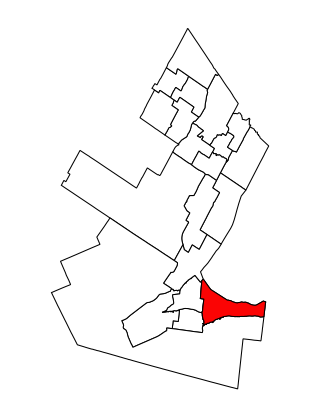
Hamilton East—Stoney Creek is a federal electoral district in Ontario, Canada, that has been represented in the House of Commons of Canada since 2004.
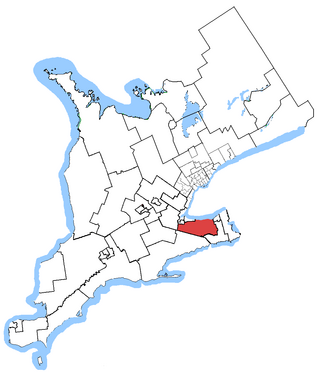
Niagara West—Glanbrook was a federal electoral district in Ontario, Canada, that existed from 2004 to 2015.
Dynasty Communications was a publisher of three alternative weekly newspapers in Ontario, Canada. These publications served the Kitchener, Hamilton and Niagara areas.
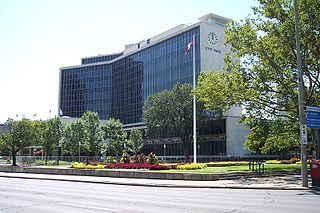
Politically, Hamilton is known for producing groundbreaking, colourful and left-wing politicians. Locally, though, the big political stories have included the controversial amalgamation of Hamilton with its suburbs in 2001, the destruction of green space around the Red Hill Valley to make way for the Red Hill Creek Expressway, and plans to build a Light Rail Transit line in the city.
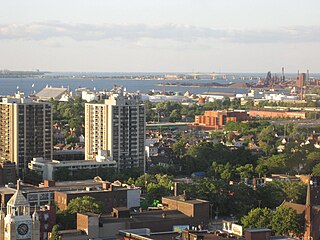
Hamilton is located on the western end of the Niagara Peninsula and wraps around the westernmost part of the Lake Ontario. Most of the city including the downtown section lies along the south shore. Situated in the geographic centre of the Golden Horseshoe, it lies roughly midway between Toronto and Buffalo. The two major physical features are Hamilton Harbour marking the northern limit of the city and the Niagara Escarpment running through the middle of the city across its entire breadth, bisecting the city into 'upper' and 'lower' parts.
Winona is a small community in Southern Ontario that is officially part of the City of Hamilton, Ontario. It is roughly halfway between Buffalo (85 km) and Toronto (77 km) along the QEW. It has a proper population of 14,076 as of the 2021 Census.

Barton Street is an arterial road in the Lower City of Hamilton, Ontario, Canada. It's also the longest street (21.0 km) in the city. It starts at the north end of downtown at Locke Street North and is a two-way street that stretches eastward through a number of different and varied communities in the city and ends in Winona at Fifty Road just west of the Hamilton/Niagara regional boundary. The street is divided in East and West portions, divided by James Street. However, the East designation does not continue through the Stoney Creek district, which was a separate municipality prior to amalgamation in 2001, and the designation as well as the address numbering system were not restructured upon amalgamation, and numbers reset at the former city limits at Centennial Parkway.

Niagara West—Glanbrook was a provincial electoral district in south eastern Ontario, Canada between 2007 and 2018. It elected one member to the Legislative Assembly of Ontario.
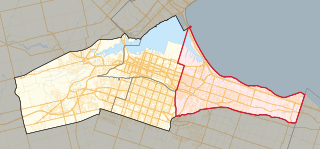
Hamilton East—Stoney Creek is a provincial electoral district in Ontario, Canada, that has been represented in the Legislative Assembly of Ontario since the 2007 provincial election.

Flamborough—Glanbrook is a federal electoral district in Ontario, Canada, that has been represented in the House of Commons of Canada since 2015.

The Hamilton Fire Department provides fire protection, technical rescue services, hazardous materials response, and first responder emergency medical assistance to the city of Hamilton, Ontario.



















